Introduction
The following information is to help manage your condition following your broken bone or bones in your ankle. The words bone ‘break’ and ‘fracture’ in this context mean the same thing (Figure 1).
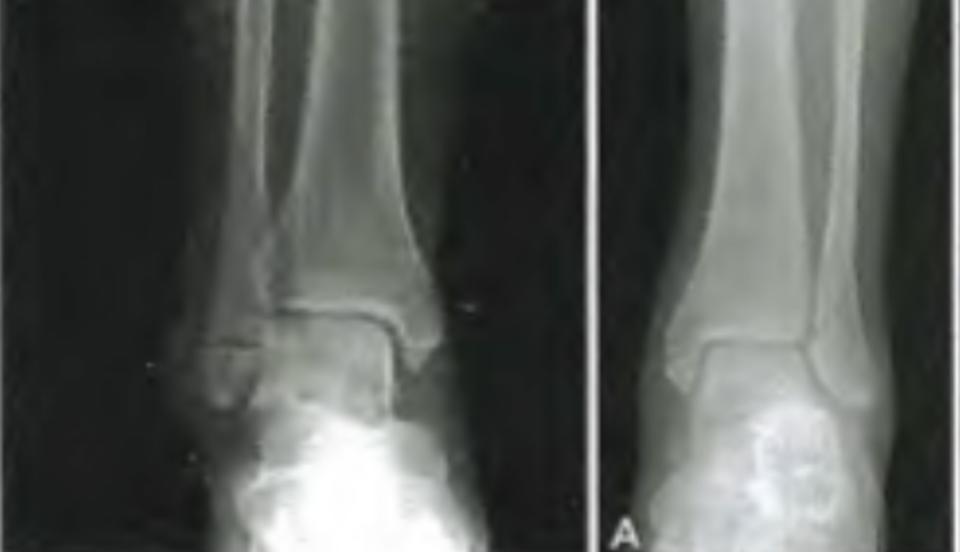
Figure 1: Examples of broken ankles
Many ankle fractures will heal well with the help of a Special Boot (sometimes called a moonboot) or Plaster Cast without the need for surgery. The Consultant will decide if you require an operation to repair the broken ankle (Figure 2).
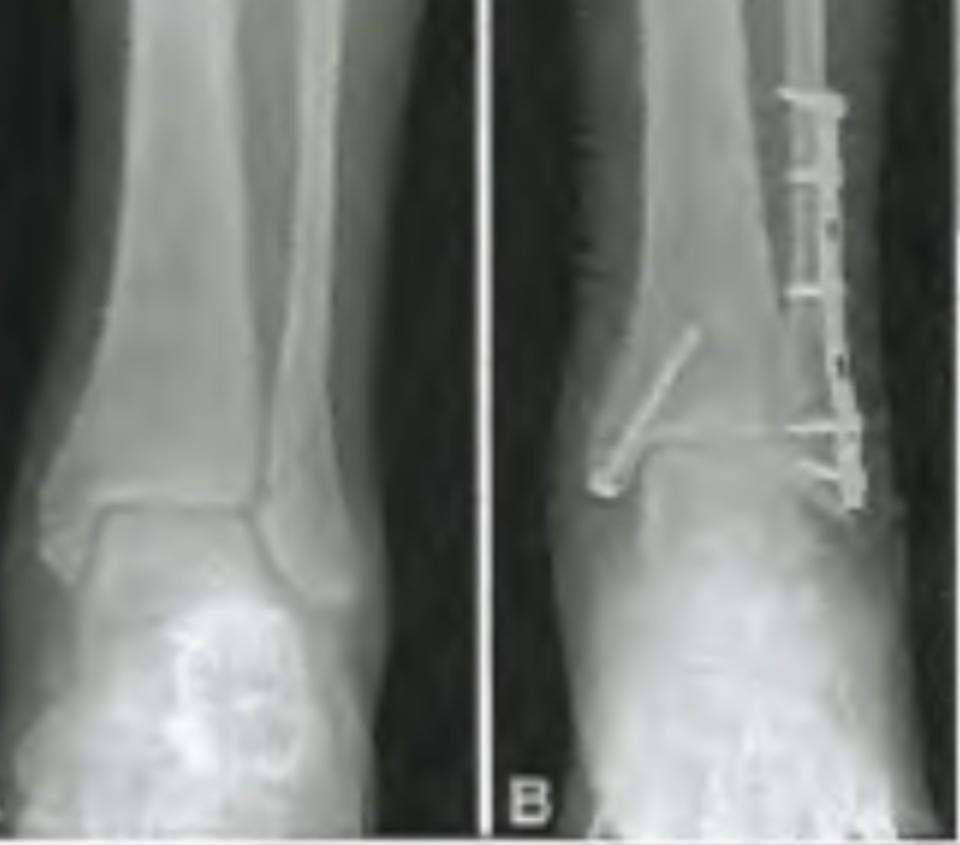
Figure 2: Example of ankle fracture surgery
If you have an operation, you will be in a plaster back-slab for 24 to 48 hours for the swelling to settle. A full below knee plaster or a moonboot will then be applied. If you do not have an operation, you will have a plaster or a moonboot applied.
Your Orthopaedic Surgeon has advised that you will be partial-weight bearing on your foot. You will be partial-weight bearing (allowing some weight though the foot an ankle, but not all your weight) with crutches or a frame for up to 6 weeks. Avoid walking for long distances initially then build up the distance slowly.
General advice at home continued:
Ask your family /carers to organise your home environment to suit what you feel able to do for example:
- move a bed downstairs if necessary.
- arrange for a table and chair to be in the kitchen.
- have everyday items close to hand.
- use a bag to carry items.
- use a lidded travel type mug for hot beverages.
Ask family/carers to help with shopping and domestic tasks until you can walk independently.
Follow-up at orthopaedic clinic:
You will be followed up in the Orthopaedic Outpatient Clinic. You will have a check x-ray and see the Consultant or Doctor.
You will be advised:
- when you can start putting weight through the foot and ankle
- when the plaster or moonboot will be removed
When the plaster or moonboot is removed you may require outpatient physiotherapy. Physiotherapy can be arranged if you are struggling to walk and help strengthen your ankle. It will help to progress your mobility and activity.
General advice at home
- Take your painkillers as advised by the medical or nursing staff to help your pain and allow you to exercise.
- Do the exercise regularly (5 times per day) to keep the leg muscles strong while you are in the plaster or moonboot.
- Walk with the crutches or frame as you have practiced with the physiotherapists on the ward.
- Walk short distances with the crutches or frame, every hour during the day and drink water regularly. This will help to reduce the risk of blood clots in the legs or lungs, which can be a serious complication.
- When not walking, elevate your leg on a footstool, sofa, or recliner chair. Wiggle your toes to· stop them getting stiff. This helps reduce the swelling.
Smoking: If you are a smoker, it is important that you stop smoking. Your Consultant will advise you that you are at higher risk of delayed healing or non-union of the broken ankle if you continue smoking. Advice on stopping smoking is available at your GP Practice or local pharmacy.
General problems following a broken ankle
Swelling: keep your affected leg elevated on a footstool, recliner chair or sofa to reduce swelling and keep moving your toes regularly.
Blood clots: there is a small risk of blood clots in the lower leg or lung for all patients following a leg injury. This is a serious complication. Do your exercises, walk regularly and drink plenty of water. This can help to reduce the risk of blood clots.
Fracture blisters: can occur over the fracture site and will be treated with dressings until healed.
Bone healing problems: About 95% of broken bones heal within 6 months. A few fractures take longer (delayed union) and some never heal completely (non-union).
Problems after an operation on your broken ankle
Bleeding: excessive bleeding from the wounds can occur if you have an operation to repair your broken ankle.
Infection: In about 1% of cases. This can be higher if you have a wound over the broken bone or if you have other illnesses like diabetes.
Problems with metal plate or screws: The plate or screws can cause discomfort under the skin if they are prominent. The plate and screws can break or loosen before the broken bones have time to heal.
Further surgery: May be required in patients who develop problems after surgery with infection, bone healing or if the nail or screws break.
Osteoarthritis of the ankle: In the long-term following an ankle fracture a small number of patients can develop osteoarthritis in the affected ankle.
Exercise programme
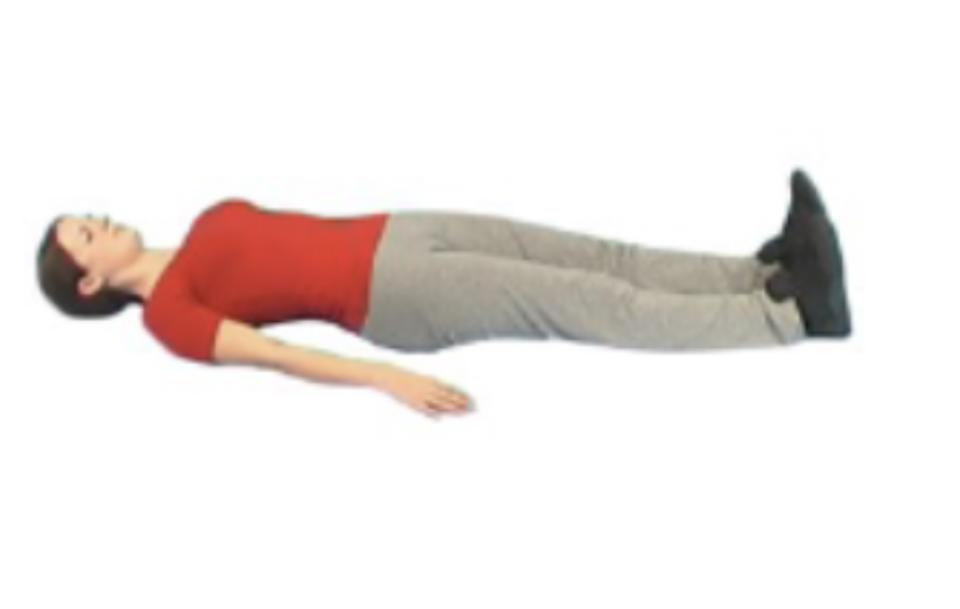
1. Wiggle your toes on both feet and bend and straighten your good ankle regularly.
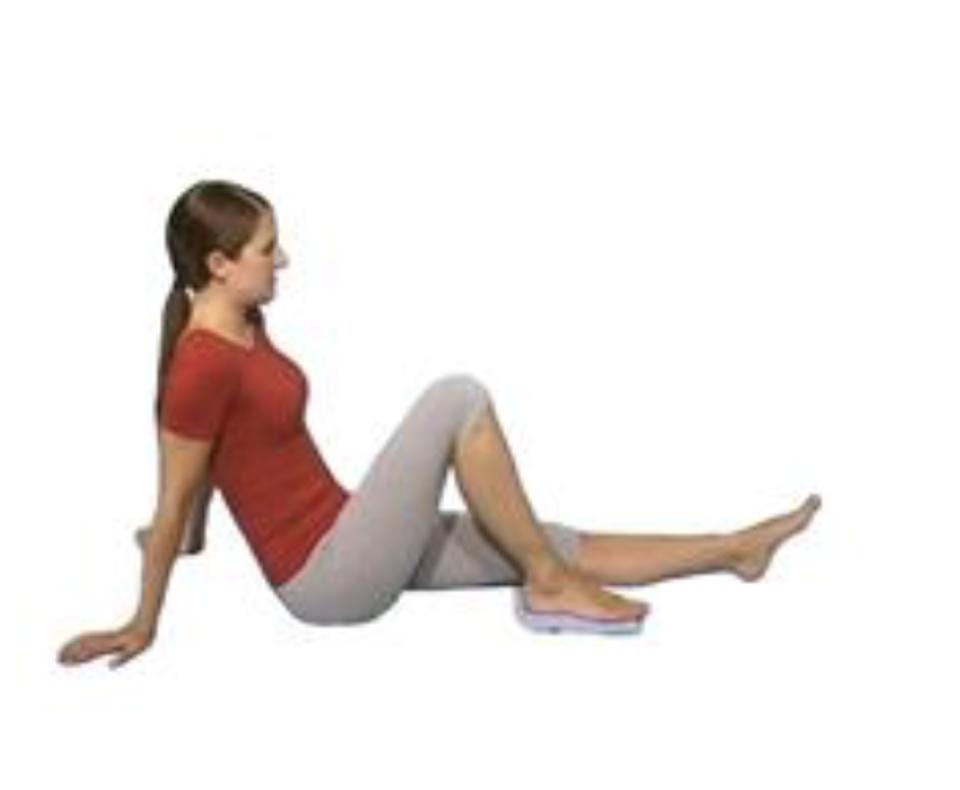
2. Sit with your sore leg straight in front of you. Bend and straighten your knee to prevent it getting stiff. Repeat 10 times.

3. Lying down or sitting with your sore leg straight in front of you, push your knee down firmly against the bed, tense up the muscles at the front of the thigh. Hold for 5 seconds. Repeat 10 times.
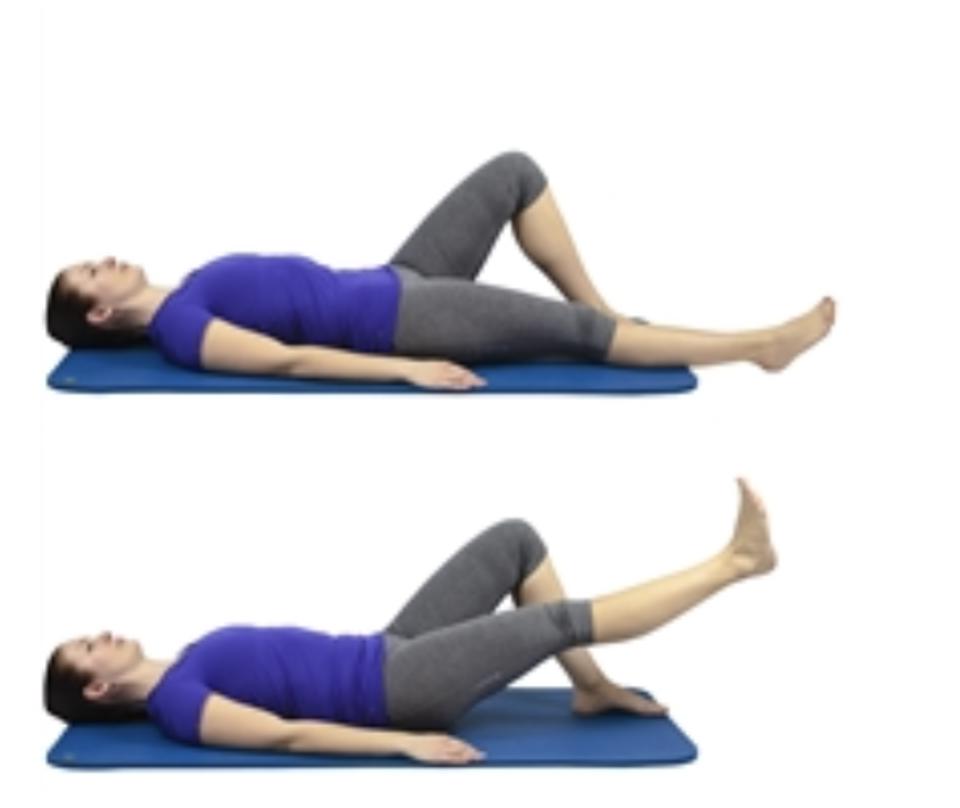
4. Lying back, knees straight, slowly raise your affected leg up keeping the knee straight. Hold for 5 seconds and slowly lower. Repeat 10 times.
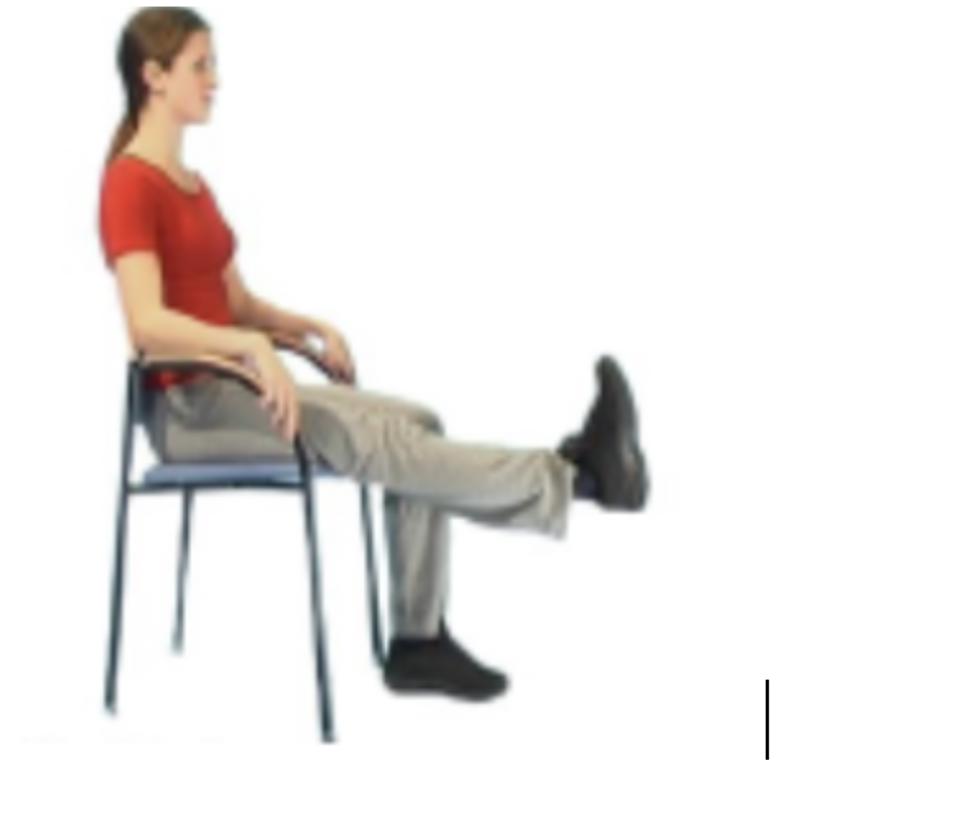
5. Sit on a chair with a cushion under your knee. Slowly bend and straighten your affected knee. Repeat 10 times.

6. Sitting or lying, squeeze your buttocks together. Hold for 5 seconds. Repeat 10 times.
When walking partial weight bearing with crutches
Put both crutches in front of you, elbows tucked into side. Keep both feet on the ground. Lean through the crutches and step forward with your affected (sore) leg between the crutches and then step with through with your unaffected (good) leg).
Walking upstairs:
- Start by keeping your affected (sore) leg off the ground and behind you.
- Hop up with your unaffected (good) leg.
- Move your crutches onto the same step.
- Go one step at a time.

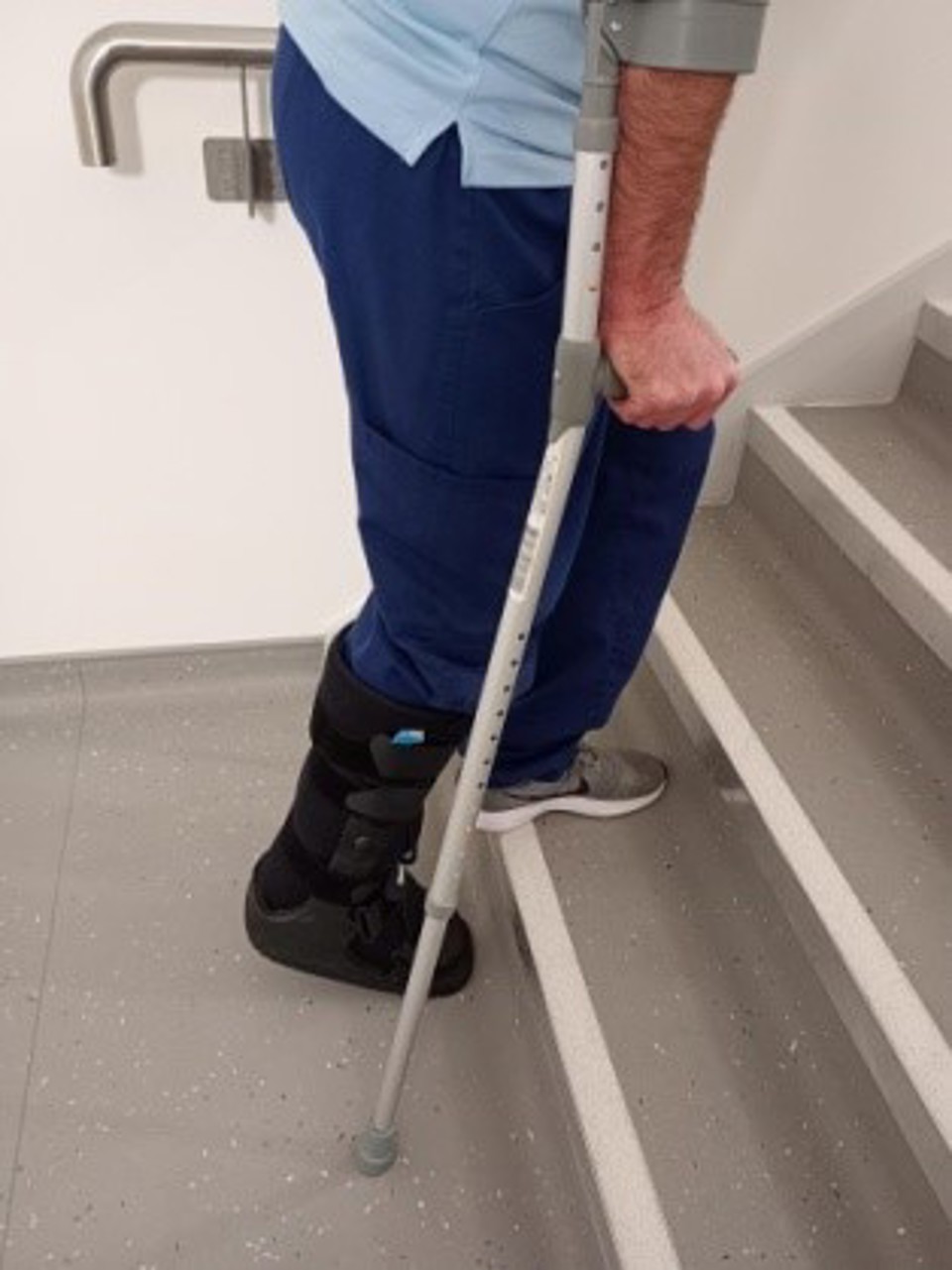
Walking downstairs:
- Start with both feet on the step.
- Move your crutches down one step.
- Step down with your affected (sore) leg taking weight on the crutches to help, then bring your unaffected (good) leg down.
- Go one step at a time.
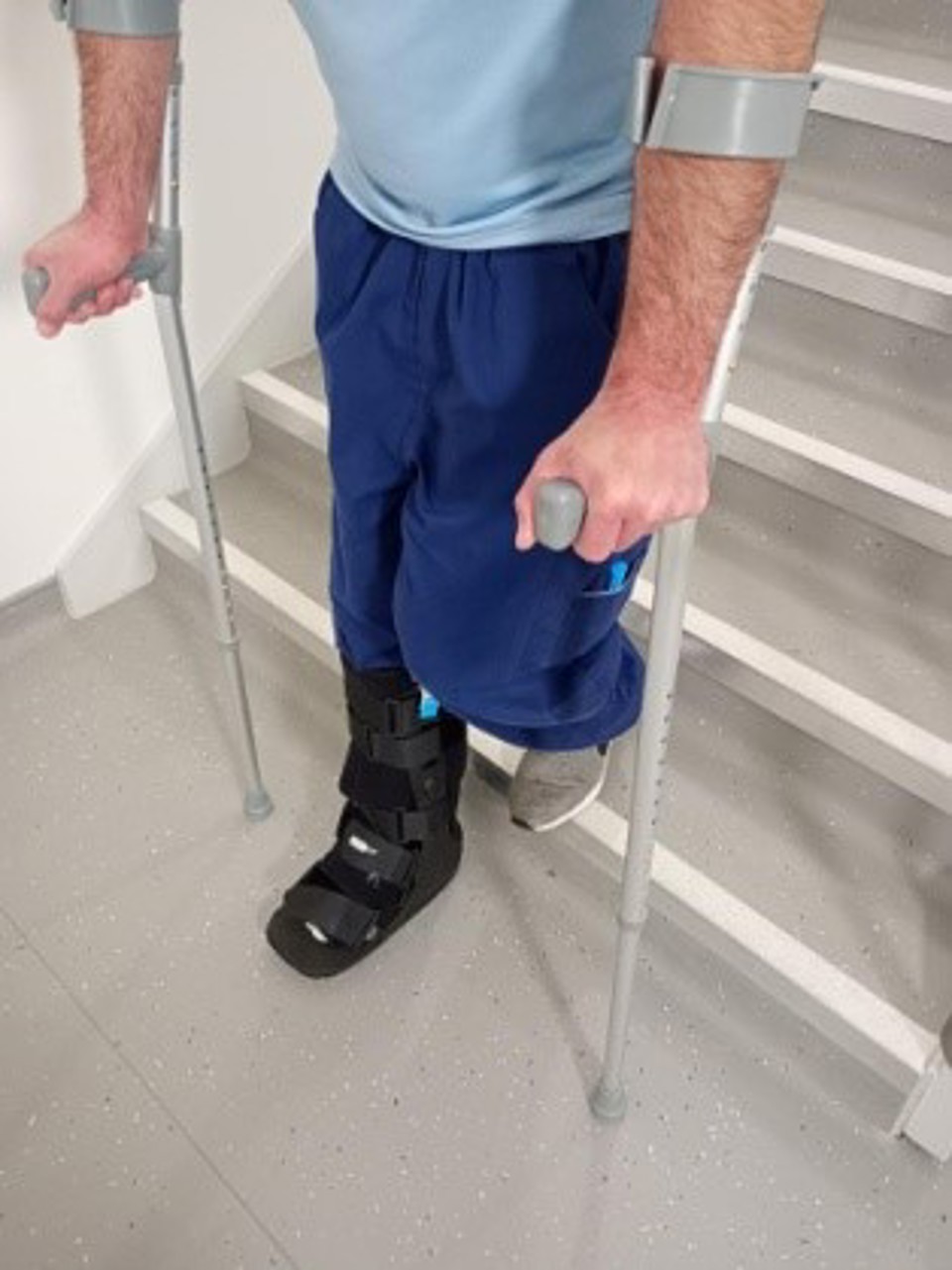
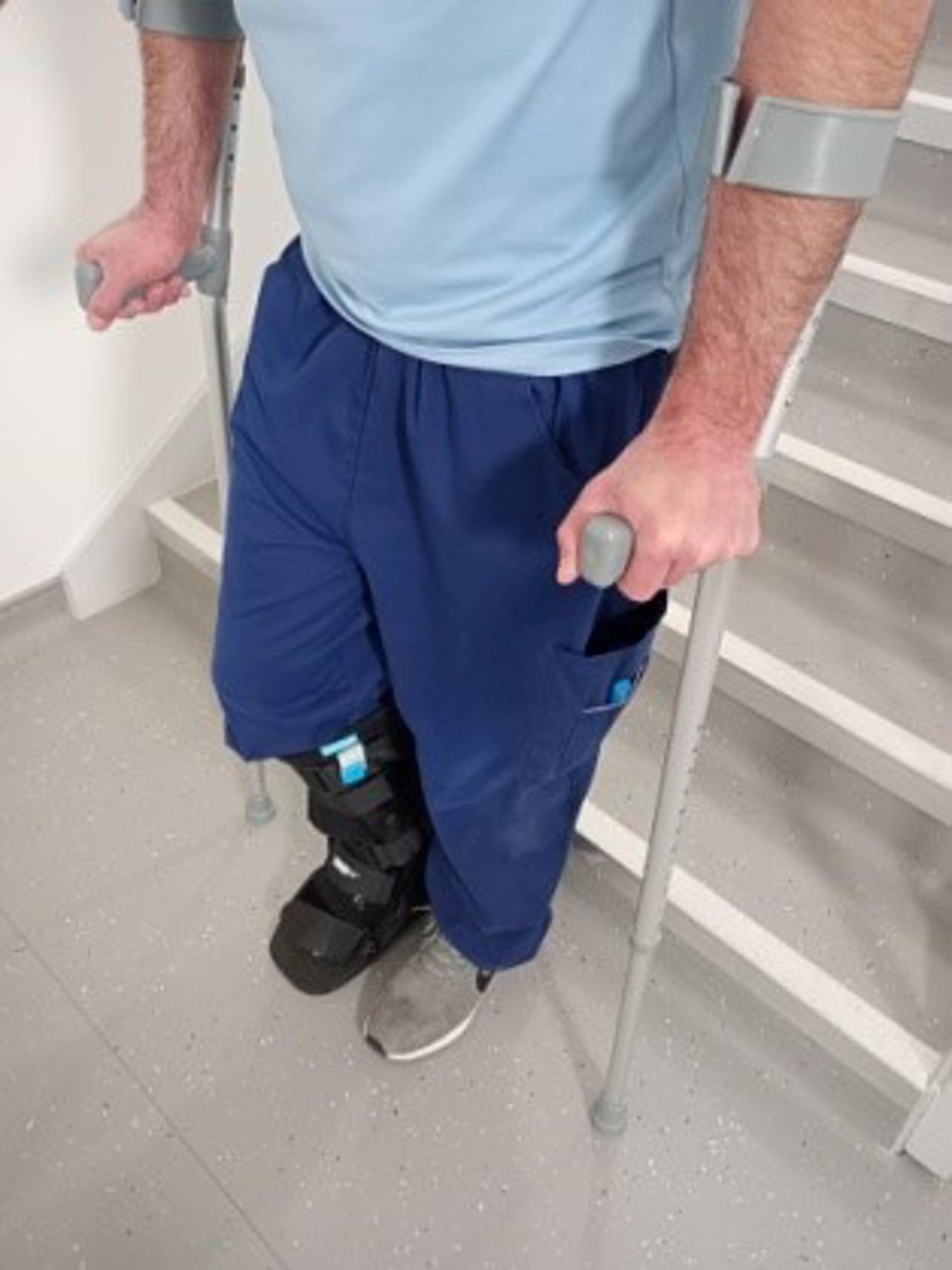
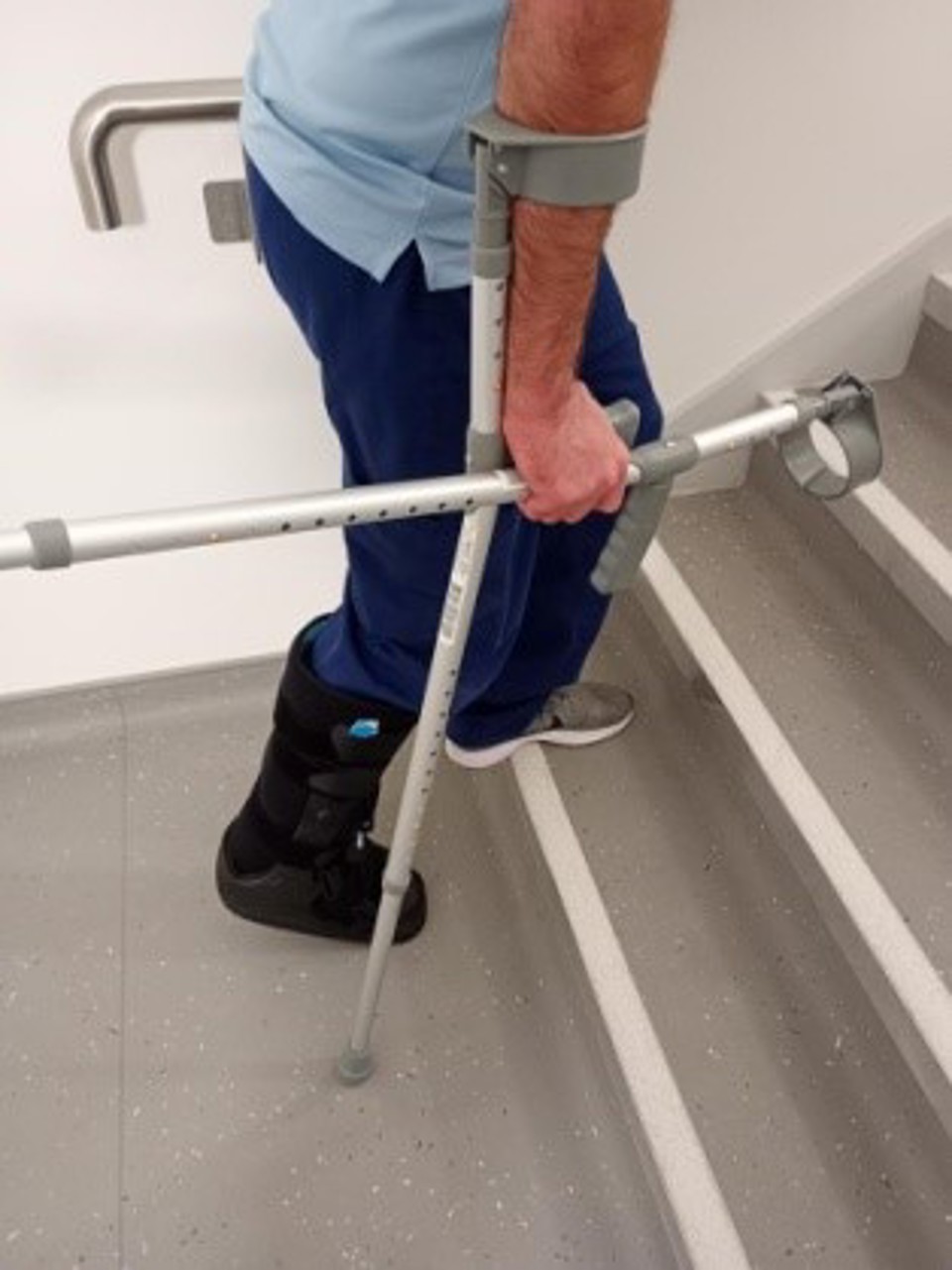
Stairs with a handrail:
- Always try to use a handrail when using stairs. Hold onto the handrail with one hand.
- Use one crutch on the opposite side whilst also holding the other crutch
- When using a handrail, the sequence on the stairs is the same as above.
Worries or concerns
For non-urgent issues or concerns
For non-urgent issues or concerns please contact your Consultant’s Secretary through the NHS Fife Hospital Switchboard 01592 643355.
For urgent issues or concerns
If you have any urgent concerns regarding your condition, please contact the Physiotherapy Service on 01592 647199.
Urgent advice for patients between 8am to 8pm Monday to Sunday, contact the National Treatment Centre - Fife Orthopaedics on 01592 643355 Extension 22685.
Urgent out of the hours advice
For an urgent problem out of hours, please contact NHS 24 on 111 or attend Accident and Emergency.
Emergency advice
For emergency advice, attend Accident and Emergency or call 999.
Accessible formats
If you require this information in a community language or alternative format such as Braille, audio, large print, BSL, or Easy Read, please contact the Equality and Human Rights Team at: email: fife.EqualityandHumanRights@nhs.scot or phone 01592 729130. For people with a hearing or verbal impairment you can also contact the team through the NHS Fife SMS text service number on 07805800005.




